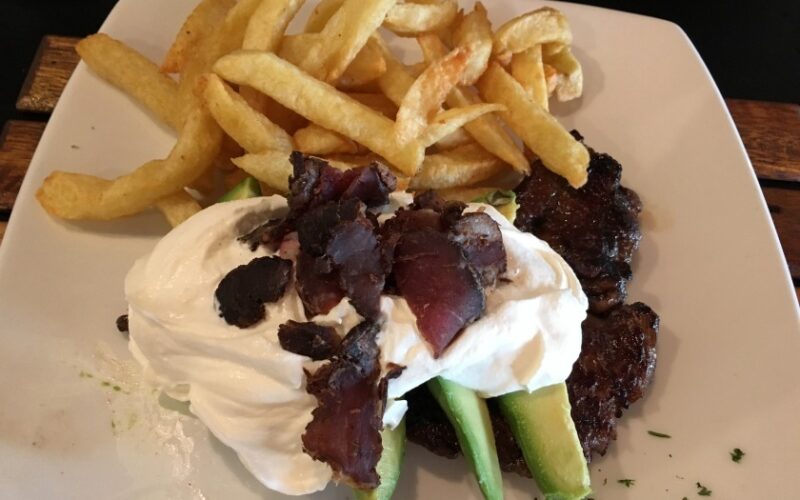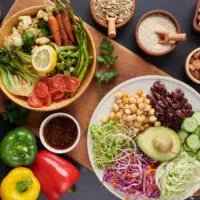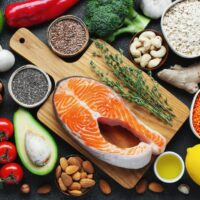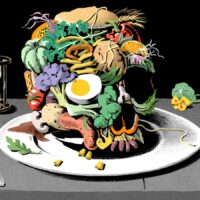Gluten Free Food Guide

Introduction
If you’re a celiac or gluten-intolerant, you know how hard it can be to eat out. Restaurants are notorious for not caring about allergies and sensitivities, which means that many celiacs end up eating limited diets of bland gluten-free foods like rice cakes and potatoes. That said, there are lots of foods with delicious flavors—and none of them need to contain wheat or barley at all!
Is gluten really bad?
Gluten is a protein found in wheat, barley and rye. Gluten intolerance can cause damage to the lining of the small intestine, resulting in the malabsorption of nutrients. Gluten-free diets are recommended for people with celiac disease or gluten sensitivity. In many cases, symptoms disappear when gluten is eliminated from the diet.
What is gluten and where can you find it?
Gluten is a protein found in wheat, rye and barley. It’s often used as a flour additive to thicken sauces and make dough more elastic in bread, pastries and other baked goods. Gluten is also added to many processed foods like soups, sauces and frozen dinners as well as non-food items such as shampoo and toothpaste.
Foods that are not made with wheat, rye or barley can also contain gluten. These include:
- Beer (made from barley)
- Malted milk powder (contains barley malt)
- Malt vinegar (contains barley malt)
Is gluten just a fad or is there a real problem with it?
Gluten intolerance is a real problem. It’s caused by an autoimmune disorder that can lead to serious health problems if it goes untreated. Gluten intolerance affects about 1 in 133 people in the United States alone, which means you’re likely to know someone who has it.
You may have seen gluten-free foods and products popping up at your local grocery store, but you might be wondering if this is just a fad or if there’s actually something to it. In this article we’ll look at what gluten intolerance is and how it affects people’s lives on both sides of the spectrum: those who are diagnosed and those who don’t know they have it yet.
Why is gluten so ubiquitous?
Gluten is a protein found in wheat, rye, barley and triticale. It is the main source of protein in wheat flour, which means that the majority of gluten-free foods are made with other flours like rice or sorghum.
Though it’s often used as an additive to give baked goods some elasticity (in other words: structure), many people have adverse reactions to gluten because they are intolerant or allergic to it.
What foods are gluten free?
- Gluten free bread
- Gluten free pasta
- Gluten free crackers
- Gluten free cookies and bars
- Gluten free cake and cupcakes, even layer cakes! Check out this easy gluten-free chocolate cake recipe. It’s so good you won’t even miss the wheat flour!
- Gluten-free brownies and blondies (our favorites are from Nature’s Path Foods)
If you love pizza, don’t worry—you can still enjoy it as a gluten-free meal. The key is finding a brand of frozen pizza crust that doesn’t contain any hidden allergens like soy or dairy products. We’ve found Udi’s Whole Grain Pizza Crust to be an excellent option for making homemade pizzas at home. For example, try our favorite veggie loaded lentil pizza recipe or load up on meat with our bacon ranch chicken pizza recipe!
Modified food starch – what is it? Is it gluten free?
Modified food starch is made from corn, tapioca, potatoes or wheat. It’s used to thicken and stabilize foods and can be found in a wide variety of products including:
- Sauces
- Salad dressings
- Pudding mixes
- Meatloaf mixes
It can also be found in many foods that are labeled “gluten-free,” so it’s important to read the label before buying any product containing modified food starch.
Chinese food – what’s safe to order as a celiac?
If you’re eating at a Chinese restaurant, stick to steamed, boiled or baked dishes. Avoid fried dishes and sauces, as well as those that contain soy sauce, oyster sauce and hoisin sauce. Some restaurants use sesame oil in the preparation of their food so it’s best to ask if they use this ingredient before ordering.
If you have celiac disease or are sensitive to gluten and have been previously diagnosed by a medical professional, then it’s advised that you avoid any foods that may contain traces of wheat.
Thai food – what’s safe to order as a celiac?
When you are dining at a Thai restaurant, there are several ingredients that should be avoided. These include:
- Fish sauce
- Soy sauce
- Oyster sauce
- Hoisin sauce (a sweet Chinese soybean paste)
- Chili paste (usually red or green in color)
These sauces are used in many curries and stir-fried dishes. Because of their prevalence, it can be difficult to order a safe meal if you have celiac disease or gluten intolerance. However, there are some options available! A good rule of thumb is to stick with milder sauces like coconut milk when possible and avoid anything made with chili peppers or spices (including chili paste).
Indian food – what’s safe to order as a celiac?
When ordering Indian food, avoid:
- Paneer (cheese), naan (flatbread), and rice.
- Aloo gobhi, aloo matar, aloo gobi, aloo saag, and baingan bharta.
- Dal makhani (lentils with butter).
- Tandoori chicken or other meats cooked without touching the tandoori grill directly.
Gluten free doesn’t have to mean flavor free.
When you’re shopping for gluten free foods, don’t be afraid to experiment with different flavors. While a lot of people think that gluten free food is tasteless, there are plenty of ways to add flavor to your meals and snacks. Try topping your pasta with sauces like béchamel or pesto, or adding extra herbs and spices to new recipes you’ve never tried before.
Gluten-free pasta is another great way to add more flavor without the carbs. You can even try mixing up which kind of pasta you use each week so that you don’t get bored!
If sandwiches are more your thing, give bread alternatives like gluten-free bread or lettuce wraps a try instead. These options allow you to make sandwiches in fun shapes without sacrificing taste or texture! As long as they’re spread with toppings like mustard (which also has no gluten) then whatever shape these sandwiches take won’t matter because they’ll always taste delicious!
Lastly but certainly not leastly… beer! Gluten free beers have become very popular over recent years so chances are there’s one near where I live too 😉
Conclusion
Whew, that’s a lot of information! Hopefully you’re less confused about the gluten-free diet now than when you started reading this post. If you’ve been diagnosed with celiac disease or non-celiac gluten sensitivity (NCGS), it can be overwhelming to see all the foods that contain gluten and try to figure out which ones are safe for you to eat. But don’t worry, because we’re here to help! We’re going over all the information we’ve covered today so far, plus some additional tips on how celiacs can get their favorite food back into their lives without sacrificing taste or nutrition.



